
Wheat contains a large amount of proteins and complex carbohydrates.
The problem with most wheat products is that the wheat is not pre-digested and so the stomach and intestines are made overly busy in breaking the complex molecules into useable amino acids.
Numerous health issues such as obesity, stomach and colon disease, diabetes, candida are caused by excessive yeast, indigestible bran fibre and the undigested complex proteins and carbohydrates that enter into the intestines.
In the old times, bread was made using naturally occurring ferments (sourdough) and the dough was left to stand long enough for all the pre-digestion to be completed before the baked bread made it into the stomachs and intestines of the people. Properly slow-fermented breads are healthy and delicious and for most people (celiacs aside) are perfectly fine to enjoy.
Here is the updated recipe for two delicious large loaves of slow ferment bread:
Ingredients:
Dough:
- 1kg of organic white flour (don’t use wholemeal, you cannot digest the bran)
- 750g of organic spelt flour
OR better still….
500g organic khorosan flour + 250c organic cassava flour (super delicious) - 1/4 cup of chia seeds
- 1 tablespoon of ground ginger (magic ingredient)
- 1 cup of mixed seeds (sunflower, linseed, pepitas/pumpkin, sesame)
- 1/2 teaspoon freshly ground Celtic Salt
- 1/3 cup of cold pressed organic oil (coconut or olive)
- 750ml of warm water
Ferment starter:
- 1/4 teaspoon yeast (this is just as a starter to get the ferment started)
- 1 tablespoon of organic molasses (must be organic) or honey
- 1/2 teaspoon of ground ginger (magic ingredient)
- 1/2 cup of warm filtered water
Method:
Put ferment ingredients (ginger, yeast, warm water and molasses) into a bowl and stir to dissolve


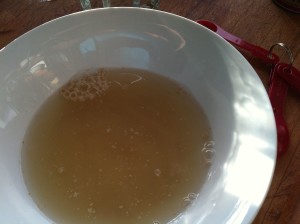
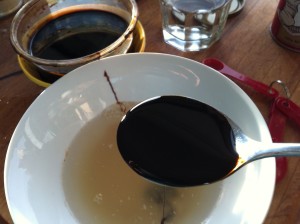
Leave for about 30 mins till the ferment starts to froth
In a big mixing bowl:
Sift the flour, ginger and add the chia seeds and salt
Take 1/2 teaspoon of this mix and add to the ferment liquid so it gets a good taste of what is to come.
Put the mixed seeds in a cup and soak in filtered water – best is to leave overnight, but 1/2 hour minimum.
Rinse in clean water before adding to the flour mix.
When the ferment starter is ready….
add the oil, warm water and ferment liquid into the flour and soaked seed mix.
Stir in well to make sure that all flour is wet, add more water as required to get a stiff, moist mix.
Cover bowl with a damp tea towel and leave in a warm place overnight (minimum 12 hours, 24 hours or more is better).
Next morning, knead/punch the swollen dough down.
Coat two bread tins liberally with coconut oil.
Update: Line the bread tins with Baking Paper, the loaves will not stick to the pans and the crusts are better….
Take out dough and place into the two tins.
Cut a gash in the top of each loaf with a sharp knife/razor blade to allow it to open as it rises.
Place tins in oven at 50 degrees (warm) for about an hour for the dough to rise again.
When the loaves are at the desired height, crank up the oven heat to 170 degrees for 50 minutes.
Remove baked loaves from oven.
Ta Dah!
Use spatula to work the sides and ends away from the tin and get the loaves out.
(This is made much easier if you use the baking paper trick)
Brush the top crust with coconut oil then place upside down into the baking tins.
Put back in oven to crispen up the bottom crust for 10 minutes.
Take out of oven, remove from tins and place on wire rack to cool.
Yum!
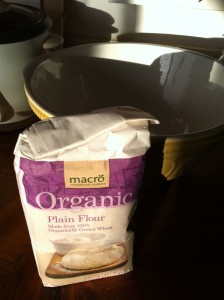
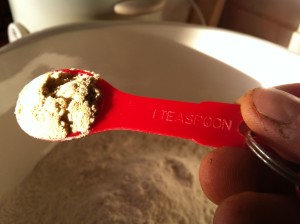
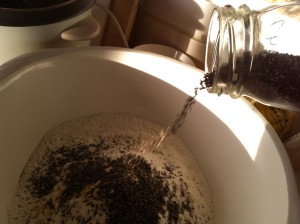
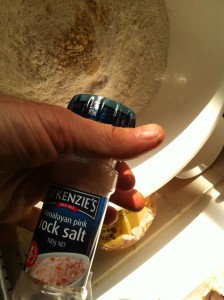
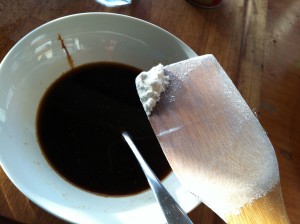

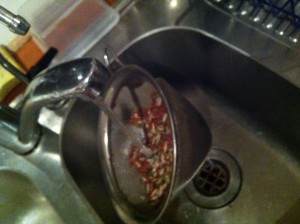
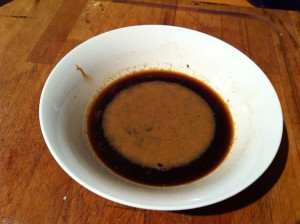
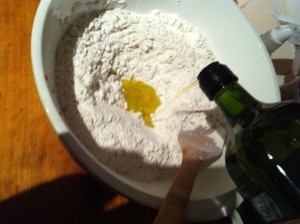




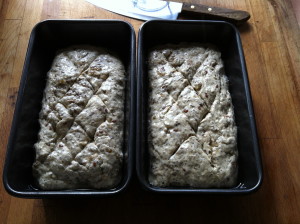
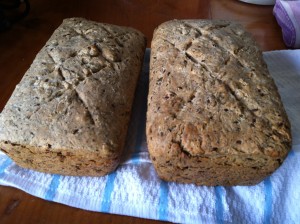
Sorry, the comment form is closed at this time.